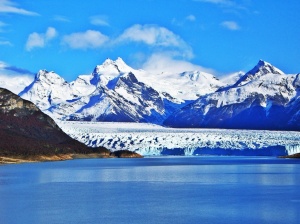
Introduction
For many years we have been thinking about taking a trip to the end of the world. We are both very familiar with Chile and Argentina. Carolina grew up in Temuco, Chile and we met while I lived in Santiago for a few years. Since our marriage we lived in California and several European countries. Today we live in my home country, The Netherlands. Over the years we have visited Chile many times but never had the time to travel by car all the way to Tierra del Fuego. The whole idea started in the summer of 2019 with a phone call from tia Laura to Carolina in which she said “I want to see the glaciers one more time before I die or they melt”. La tia is 80 years old and could not find anybody who wanted to join her, so why not ask the niece that lives in Europe and is married to “the gringo”.
Preparation
Any preparation of a trip is half the fun. Although our trip will only take place in February and March 2020, we already started to make the first bookings in October 2019. It all started with confirming the three day cruise trip from Puerto Natales to the glaciers in Southern Chile. The Skorpios cruise easily fills up. Once these days were set we could book our plane tickets from Amsterdam through Paris and Santiago to Temuco. Always a hell of a trip and not something I am really looking forward to. As most of the towns where we plan to stay are not touristic hotspots with lots of hotels, we have made advance hotel bookings. Happily, we do not have to rent a car but we can use a family car.
The plan is to start the trip in Temuco and travel across the Andes to the Argentinian pampa and further to the Atlantic coast. From there we will move straight south and arrive in Punta Arenas. This trip is around 2500 km and Carolina and I expect that it will take us 5 days. In Punta Arenas the two old ladies will join us. They will come by plane directly from Temuco. The highlight of the trip (although you never know) will be a cruise from Puerto Natales. After the boat trip our way back to Temuco will be partly through Argentina (including a two day stop at El Calefate) and cross the border back into Chile at Chile Chico. From there on we will take the Carretera Austral (road 7) to Puerto Montt and back to Temuco. All in all, it should be around a three – four week trip.

There are a few anticipated highlights on this trip. First of all the drive through the Argentinean pampa. We have had long drives through desert- like areas before (Nevada) but are curious what we will encounter in Argentina. There are not that many good travel books with information on this part of the world but “In Patagonia” from Bruce Chatwin is an absolute must read.
A second highlight will be Punta Arenas / Straits of Magellan, close to the end of the world. We need to see penguins and apparently there is a King penguin colony near Porvenir (Tierra del Fuego). Finally of course, we are looking forward to the drive north to El Calafate, Chile Chico and the Carretera Austral. Lots of nature!
We will fly to Temuco on February 17 and a few days later we will start the road trip. First stop will be San Carlos de Bariloche. The plan is to write in this blog at the end of every day. It will be adventure!
February 9, 2020
We are going to travel in a week so we are making the last preparations. Checking a last time if all the hotels are booked, did we also pay the airlines for our luggage and so on. Do we need to take mouth masks in order to not get the Corona virus?
The weather in the Netherlands is so bad this week with wind, rain and dark days. Next time we will see the sun, we will probably be in Chile.
February 19, 2020
After 29 hours of traveling we arrived in Temuco, the home town of Carolina and the starting point of our road trip. The trip was uneventful, just very long. We had to change planes at the new terminal of Santiago airport and for a few minutes we had the impression that the airport was better organized than before, but as soon as we arrived at the place where we had to pick up our luggage, the chaos started. The departure terminal for domestic flights was still suffering from overcrowding. On top of that, the announcements are made extremely loud and it was unclear to me what language was used. I already started to worry that my Spanish had deteriorated but Carolina, whose first language is Spanish, also did not had any idea what was being announced. The chaos was enormous. Carolina realized that she had come home.

At times it is difficult to understand South American logic. We had to wait 5 hours in Santiago for our flight to Temuco as there were no flights. When we finally boarded our plane, we noticed that two more planes were also boarding to fly to Temuco. Five hours nothing and then three planes within 15 minutes. The result: overcrowding and chaos at the small Temuco airport which is not build for three planes arriving at the same time. When one politely asks why this can not be better organized the answer is: “it is what it is” and maybe that is true.
The best of South America are its people and the food. Only a few hours after arriving in Temuco we were already invited to food and drinks with family and enjoyed some South American hospitality. Everybody was in good spirit and it was one big happy family. Moreover, the day was absolutely beautiful which we needed after all that bad weather back home. Life is good.


February 20, 2020
Today was a very warm day and thus the perfect excuse to leave the city and spend most of the day at the farm of tia Laura. Carolina’s aunt bought this wheat / potato farm 18 years ago and is transforming it in to a nature sanctuary. The last time I was at the the farm was three years ago and since then she has planted many more native trees which have transformed part of the farm in to a classic Chilean forest. Very pretty.



The farm includes lots of water which is channeled through small canals and creeks through some ponds. Water is of course important for irrigation of the farm but it also offers a great opportunity to go fishing. One of the lagoons is full of trout, in my humble view, there is too much trout in this lagoon so Juan Carlos and I will go fishing when we come back from our road trip to bring the fish stock back to its optimal level.



Every Chilean day seems to end with a lot of people around the table and with food and drinks. Not a bad way to end the day. I especially enjoy the pisco sours.
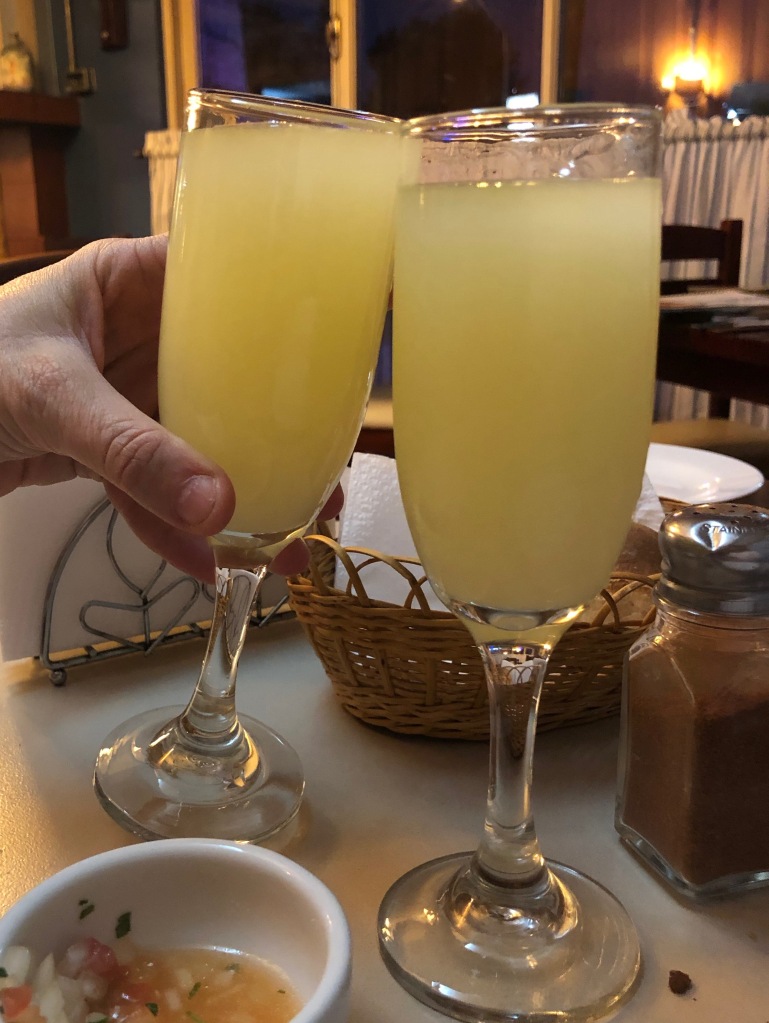

February 21, 2020
Next to the beautiful sides of the lake district in Chile, there is also a different side to the country. In October and November Chile, including Temuco, was the place of large social unrest, including some violent demonstrations. Some of Carolina’s younger family members actively participated in these demonstrations whereby one niece was almost hit by a rubber bullet. Everybody we speak to is convinced that the social unrest will resume after the holiday season. Temuco is full of graffiti against the president (“Piñera”) and many shops and banks are preparing for more violent protests. The town looks a bit like a pre-war zone.


In the meanwhile we are preparing for our road trip which will start tomorrow. So hopefully tomorrow we can present you with some beautiful pictures from the crossing in to Argentina.
February 22, 2020
The plan always was to leave Temuco early so there we are at 7.45 am to buy bread at the local panaderia (“bakery”). This panaderia is well know for its fresh bread, however not before 9.30 am on a Saturday morning.

Once on the road the trip goes south for the first two hours on the panamericana highway. Close to Osorno we turn east towards Argentina and towards the Andes mountains. Enormous mountains and volcanoes in front of us which we have to cross in order to get into Argentina.




The border crossing was pretty smooth, it only took about one hour. The first town in Argentina is Villa Angostura, a pretty town, in which the Dutch royal family owns an estate. After a 8 hour trip we arrived in San Carlos de Bariloche. We have been several times in Bariloche, it is a pretty town on Lake Nahuel Huapi, probably the prettiest lake in all of Argentina.


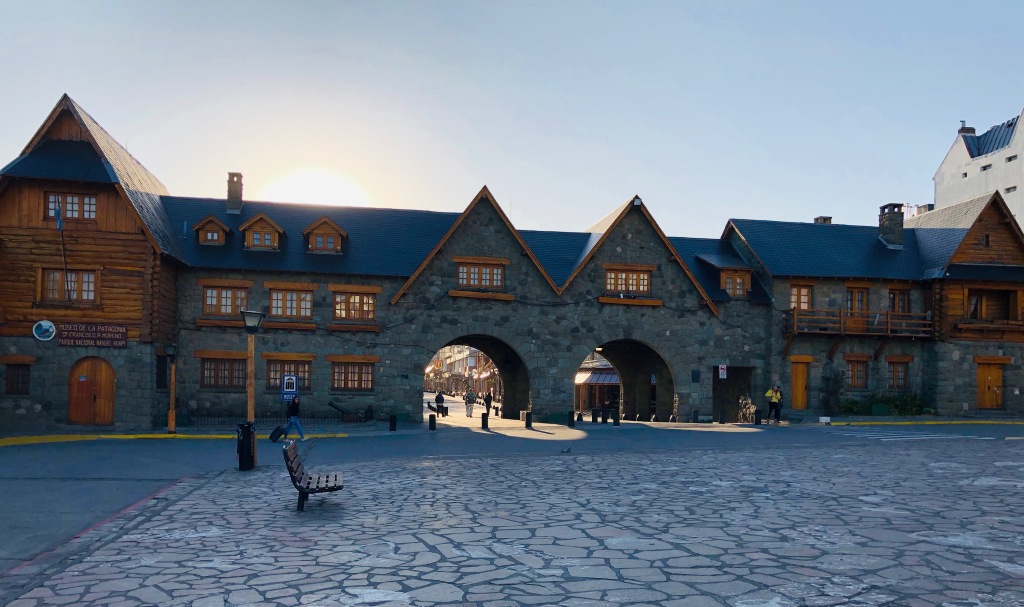

February 23, 2020
Before we go on the road today we first had to have a chocolate breakfast in El Turista. Bariloche is a town which was established by Swiss immigrants. They brought their knowledge on how to make chocolate with them. I probably had the best chocolate drink ever this morning

Today a relatively short trip. Just a 3 hours drive from Bariloche via El Bolson to Esquel. Driving on the famous Route National 40 which runs from Northern Argentina all the way south. This road in Argentina is like route 66 in the US, just more beautiful.
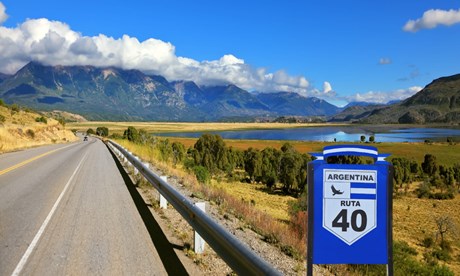
El Bolson is a nice little hippy town. We met this Argentine writer, Ernesto Maggiore, who could tell us lots about the history of the local Mapuche and Tehuelche people. We ended up buying one of his books which will not be a happy story to read.
We arrived in Esquel mid afternoon. Esquel’s claim to fame is that Butch Cassidy and the Sundance Kid owned a cabin in the area. Two of America’s most famous bank robbers moved at the end of their career to Patagonia to start robbing banks again. They only stayed a few years, robbed a few banks and moved on again. The other well known fact of Esquel is that it is the end station of the “old Patagonia Express”, the well known book by Paul Theroux. Theroux starts his train trip in Boston and goes as far south as he can go by train. The most southern train station in the world is in Esquel. Of course we went to see it. Trains are no longer running due to a big storm earlier in the month but the station is still there.



February 24 and 25
We have been driving these two days around 1100 kilometers through the desert in the Argentine part of Patagonia. The trip started in Esquel which is next to the Andes mountains and after two days we have arrived in Puerto Santa Cruz, a small town very south on the Atlantic coast. At first sight the landscape might be a bit boring.
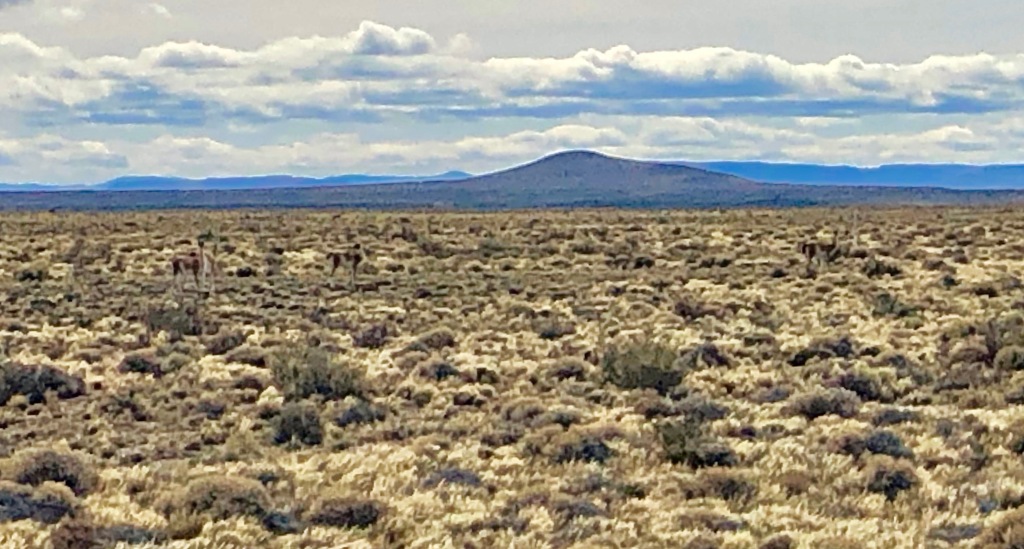

However, the desert is full of life and we have seen lots of wild animals right next to the road. The most common animals are the guanaco and ñandu, which is a small ostrich. But we also saw patagonian foxes, a family of mara patagonia and quirquincho. Weird names but cool animals.



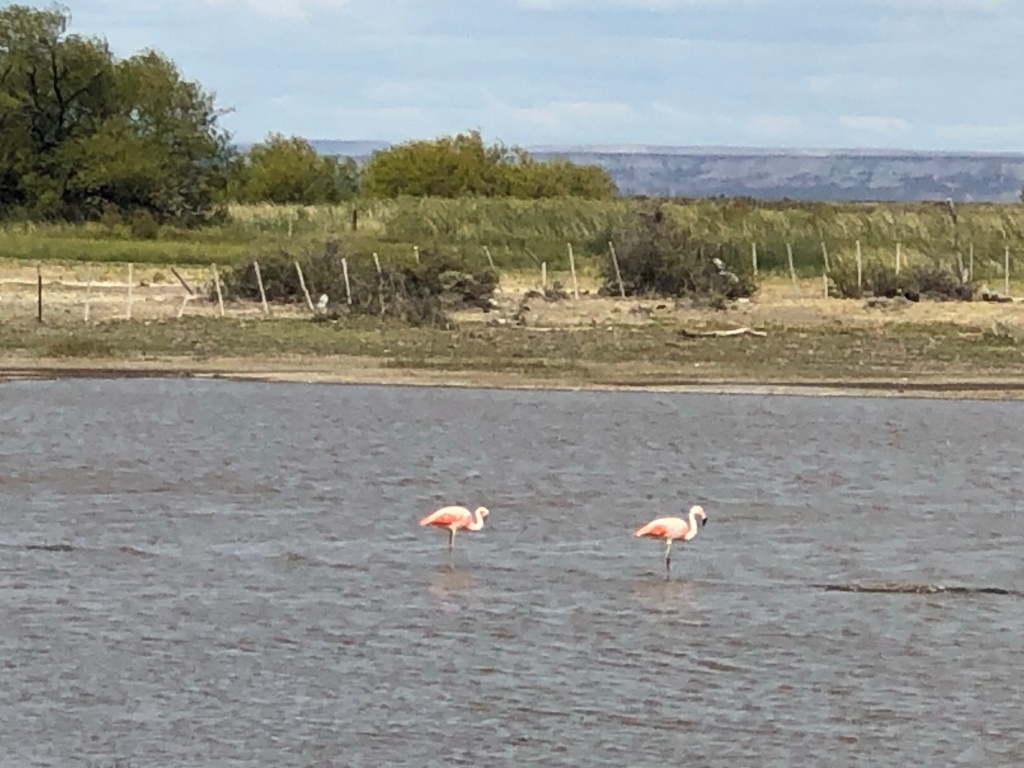
On the 24th we had lunch in the small and windy town of Sarmiento. The town is known for the discovery of an important fossil dinosaur, he Sarmientosaurus Musacchio. Otherwise it has a restaurant, a gas station and two churches. One of these churches brought me right back to my upbringing: The Dutch Reformed Church (“de Nederlandse Gereformeerde kerk”). As you will understand my heart started to beat faster, one way or the other my tribe had settled in this windy part of Argentina. The story is that in 1903, 600 Afrikaner arrived in Sarmiento following the loss of the Second Boer War. Descendants of these Boer families still make up a substantial part of the town’s population. Of course by now they are fully integrated in the Argentine society but they have their own (and mine) church.


The night we spent in Comodoro Rivadavia, an industrial city on the Atlantic coast. This is region which has lost many young man to the war for the Falklands, or as they call it in Argentina; the war in the southern Pacific. There political views on this subject are quite clear.

February 26, 2020
We started the day in Puerto Santa Cruz and the plan is to drive back in to Chile. It is another day of driving through Patagonia. Whereas the days before we might have seen guanaco’s every now and then, today we must have seen at least a thousand animals. Guanaco’s everywhere and often next to the road or even on the road.
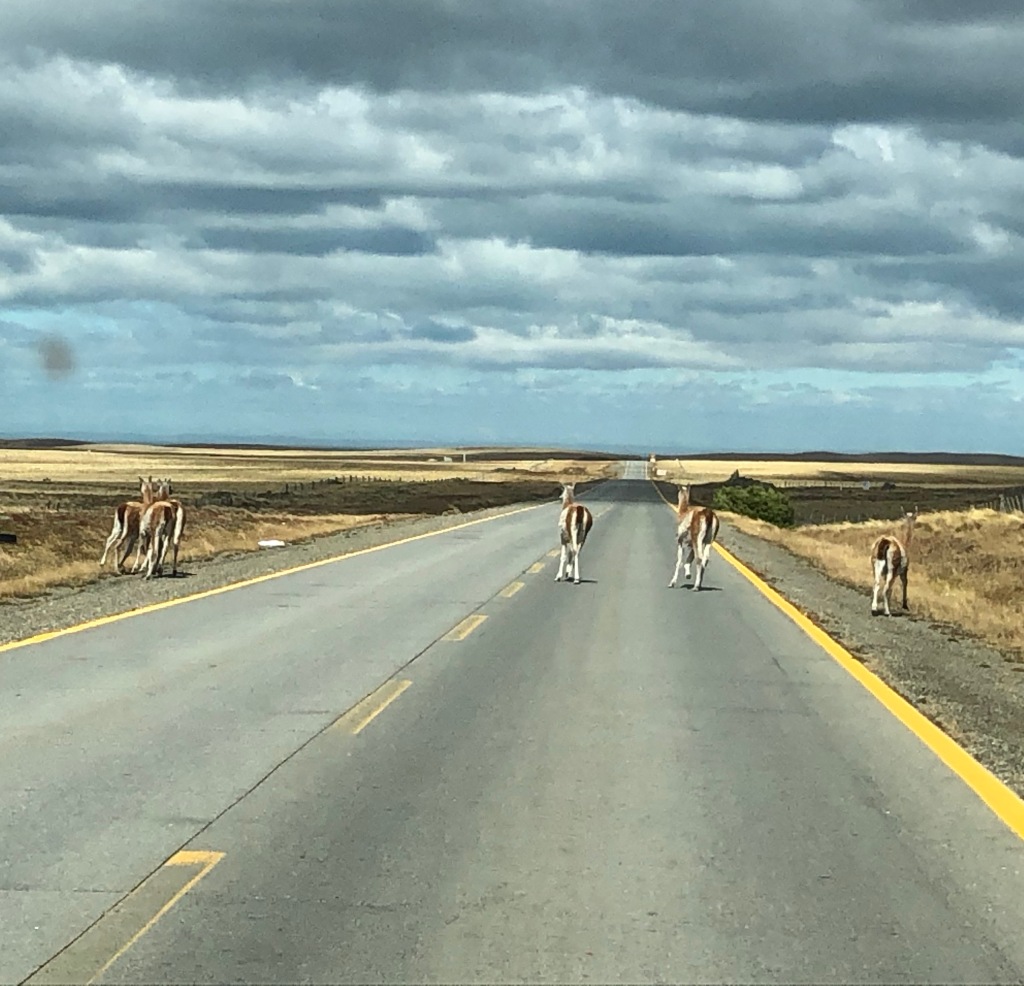

The border crossing in to Chile was quite rapid which was not the result of Argentinean and Chilean efficiency but merely because they were no other border crossers. After another hour driving we arrived finally at the Straight of Magellan, the end of the world!
The Straight of Magellan is everything you expect from it. The coast is rough and inhospitable, the water very dark and uninviting and it is windy, very very windy. In other words: pure beauty. It is one of those places you hear about at school but never think you will be able to go to and see it.

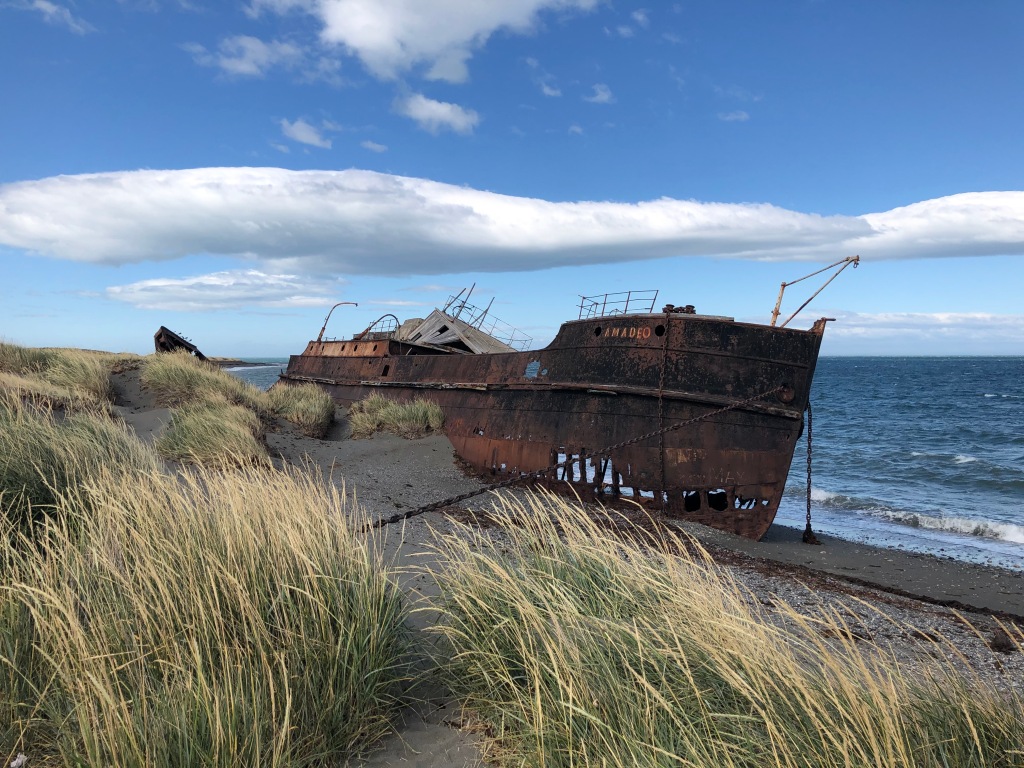
Mid afternoon we arrived in Punta Arenas.

This city is windy, it make the Chicago wind feel like a mild spring breeze. Walking on the streets is a continuous battle against. In fact it is so windy that we will not be able to see the penguins tomorrow, the boats that one needs to get to these penguins are all cancelled. Big bummer as the penguins were supposed to be one of the highlights of the trip. So, i guess that the below penguin will be the only one we will see this trip. Tierra de Fuego will have to wait for our next trip.

Later in the evening we picked up the two old ladies: Carolina’s mom and tia Laura. From now on the party of two will be a party of four. A new adventure.
February 27, 2020
Punta Arenas is known for its rapid changes in weather, sometimes it has 4 seasons in one single day. We experienced some of that today. At times it was sunny and it looked like a summer day but all of a sudden the winds picked up (90 km / hour) and we got some strong rains and the temperature dropped. We saw rainbows throughout the day,



We made a little trip to the most southern tip of the American continent, it is as far south as one can go without taking a boat. The Spaniards had built a fort at this place a few hundred years ago to let everyone know that also this corner of the world was part of their empire. The weather at this place was really bad and one now understands better why penguins like this place so much.


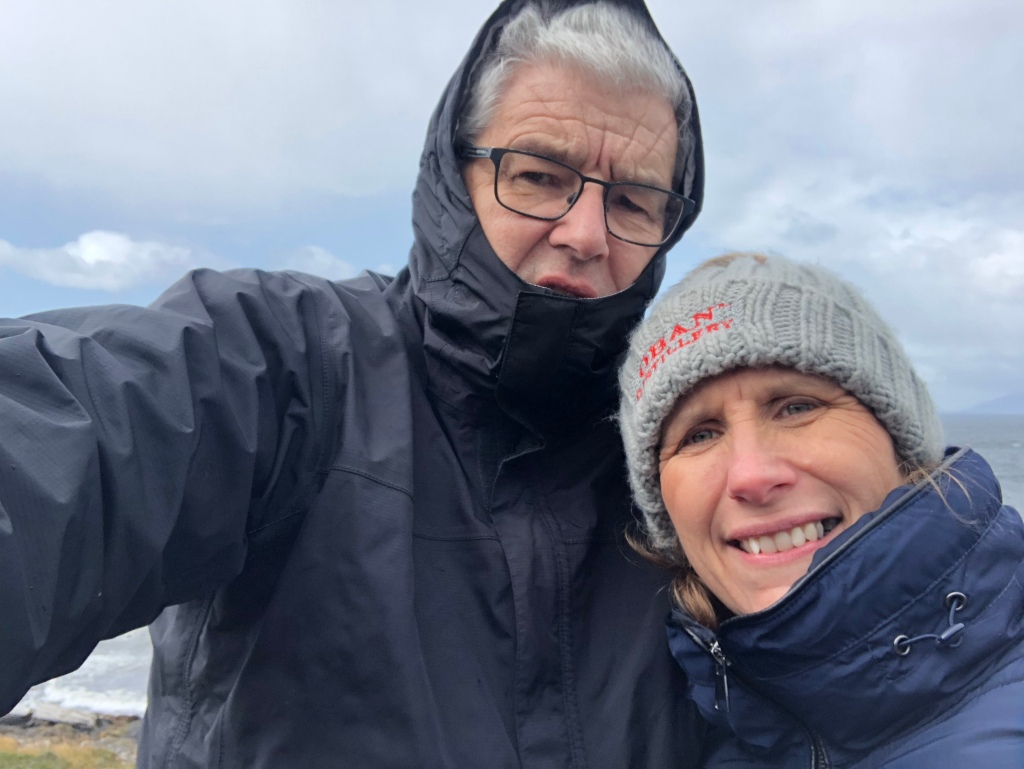
My hometown Barneveld has always been known for its chicken. However, there is clearly more to it. One of its more illustrious inhabitants was very adventurous and puts its name to some islands next to Cabo de Hornos (“Kaap Hoorn”). I had read about this a while ago but nobody really wanted to believe me. Finally I found a map that proves that Barneveld is more than a chicken town.

Due to its location and the weather it proved impossible to visit these island so it remains a nice challenge for a next visit.
The next few days we will spend on a boat to visit some glaciers. Not sure about the internet connection on this boat but we will put some pictures as soon as we are able to.
February 28 – March 2nd
These 3 days were going to be the highlight of our trip. We had booked a mini-cruise with the Skorpias III to see the fjords and glaciers of the Southern “Campo de Hielo” which is best translated as Southern Icelands. This area is the third largest ice pack in the world. The starting point of the trip was Puerto Natales, a small town some 3 hours drive from Punta Arenas. The Skorpios III is not a very big boat, around 45 cabins but due to the social unrest in Chile only 65 people were guests for this trip. It was quite an international group of people, 10 countries were represented.

There was quite a militair regime on board, we had to get up at 7 am each day and the days were packed with sightseeing and with eating and drinking. When we woke up the first morning the boat was already surrounded by ice, meaning we were getting close to the glaciers.
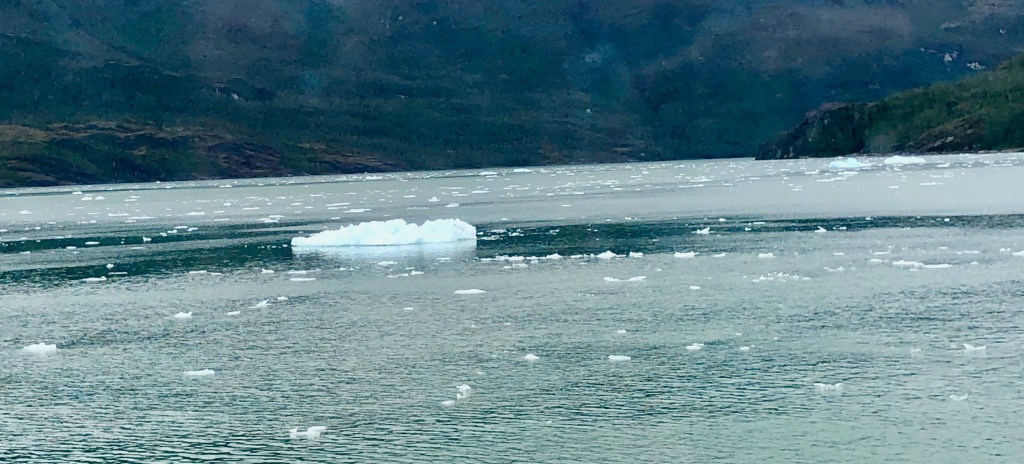

The first day we saw five large glaciers: the Amelia, El Brujo and three glaciers that were connected to the Calvo Fjord.
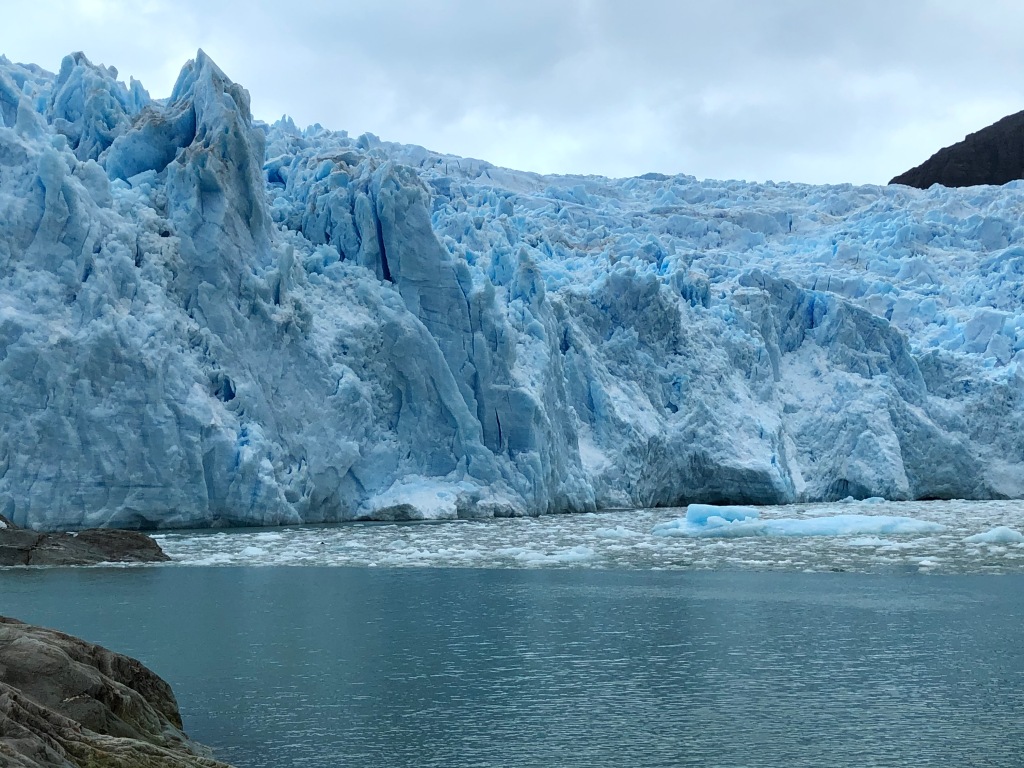



We were brought closer to these glaciers in smaller boats which was a great experience. Please have a look at the colour of the water of the picture to the right, it is green. This is not photoshopped but it is due to minerals in the water.


The whole area is very quiet. During the whole trip we did not see any other boat and no people are living in this area. All you can hear is pieces breaking off the glacier and falling in the water. Carolina became very popular on board because she was making a video at the moment when a large piece broke of the glacier. Everyone wanted a copy of her video. Unfortunately I am not tech savvy enough to down load the video in this blog.
The second day saw four more glaciers but we also did a trip with the small boats to see wild life. The scenery again was spectacular.
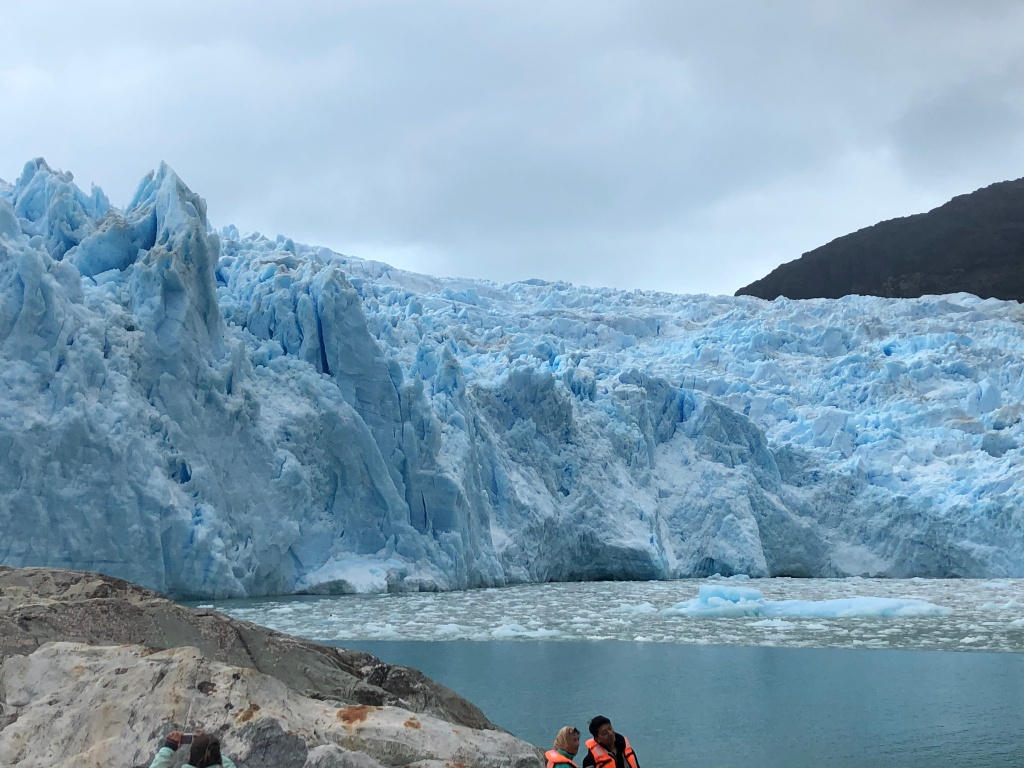




Wildlife in this part of the world mainly consist of birds and sea lions. We were not at the right time of the year to see whales. The picture to the left is a group of sea lions. The leader of this group is a male that lives with nine females and a bunch of baby sea lions. The picture to the right is of a strange kind of duck called “pato vapor”. Apparently it is one of only a few kind of ducks that can not fly. It also walks funny as their feet are positioned far back on their body. The below duck did not had any intention to fly or walk, it just lay down.
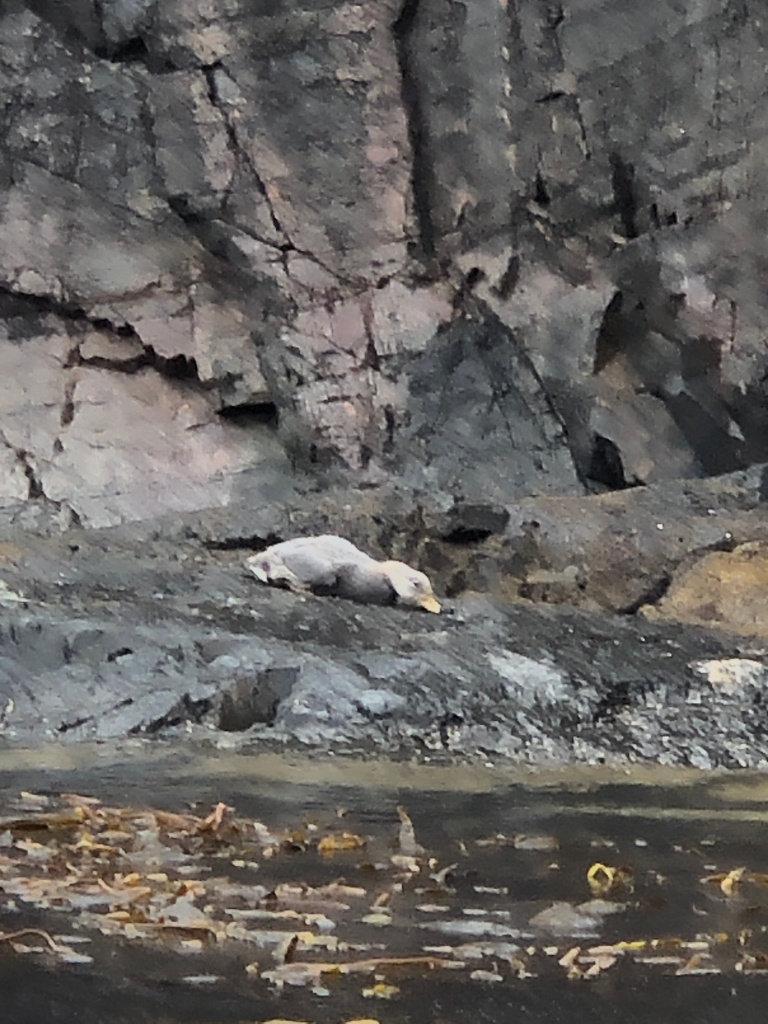

Next to that we of course saw the condor, most of these birds far away in the sky but one or two real close (see right). Then there was a bird that looked like a penguin but was really a bird (left)


We ended the day with a visit to a large estancia. The owning family of five adults and a small child live in the middle of nowhere. The nearest paved road is 37 kilometers away. The farm is around 13,000 hectares in seize and it is already since 1916 in the family. It was started by the grandparents of the present owners, which were a Spaniard with his wife from Amsterdam.
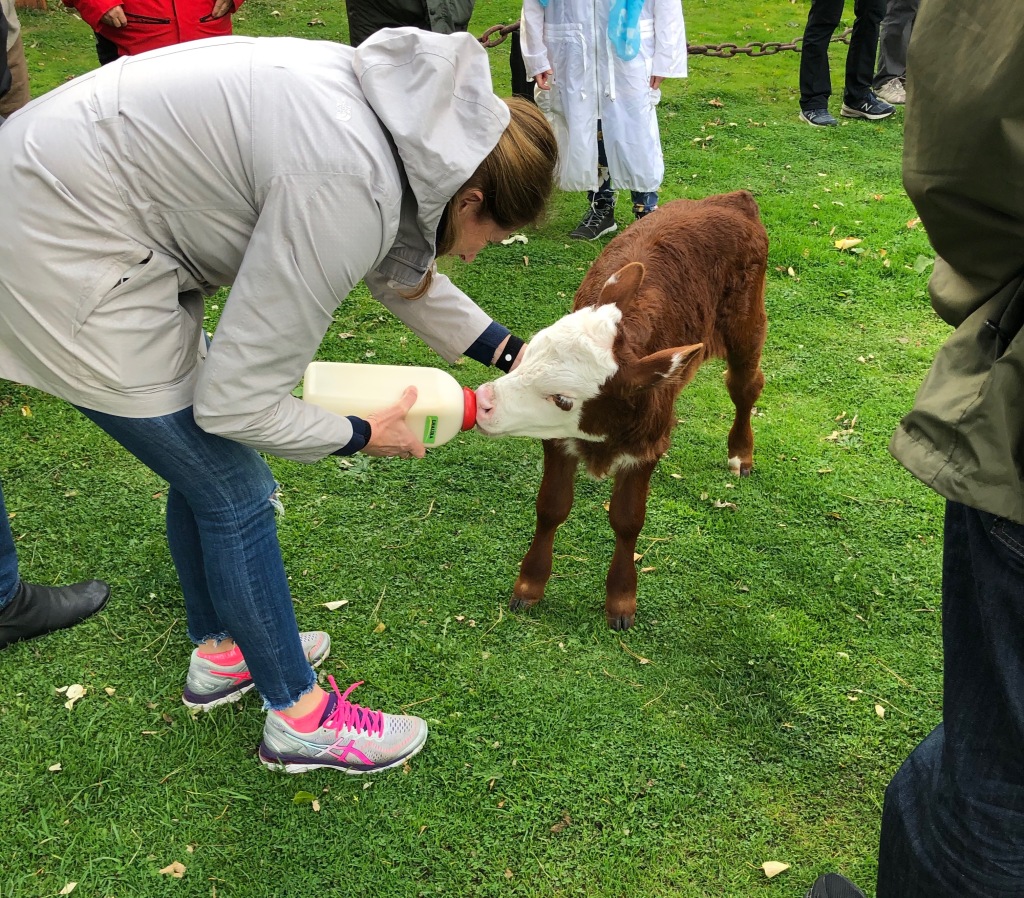


March 2nd and 3rd, 2020
We said goodbye to the boat and our fellow passengers on Monday morning March 2nd and drove from Puerto Natales in Chile to El Calafate in Argentina. We passed during this drive the Chilean national park “Torres del Paine”, a paradise for hikers. The average age of our small group does not allow for long walks but we were lucky enough to be able to make some nice pictures from this well known mountain.

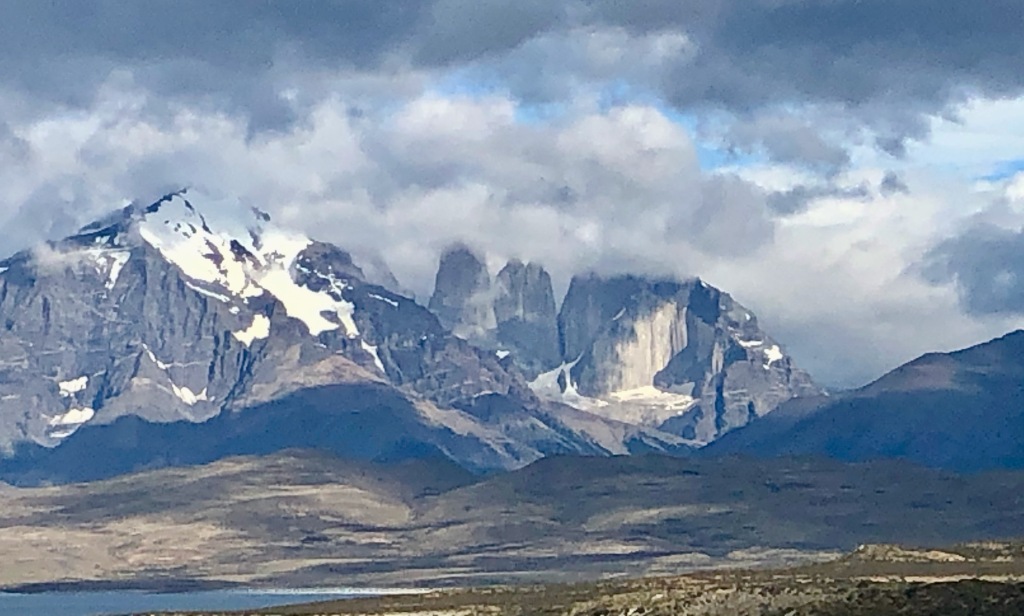
We crossed the border at Paso Fronterizo Rio Don Guillermo, a very long name for the smallest border post between Argentina and Chile. The Chilean border (photo to the right) still looks somewhat representative but the Argentines just use a shack.


El Calafate is a pretty town at the end of a long and dusty road through Patagonia. We at least had some 150 km without any pavement and the dust had taken over the car and its passengers. There were hardly any other cars on the road and for good reasons. Thank you Land Rover for building a good car.

We overtook several people on bicycles, all of them foreign tourists.You wonder why people do this to them selves but they seem to thoroughly enjoy the ride.
El Calafate is a tourist town built next to a beautiful lake. Its main attraction is the glacier Perito Moreno. This glacier can be easily reached by car and a simple hike.


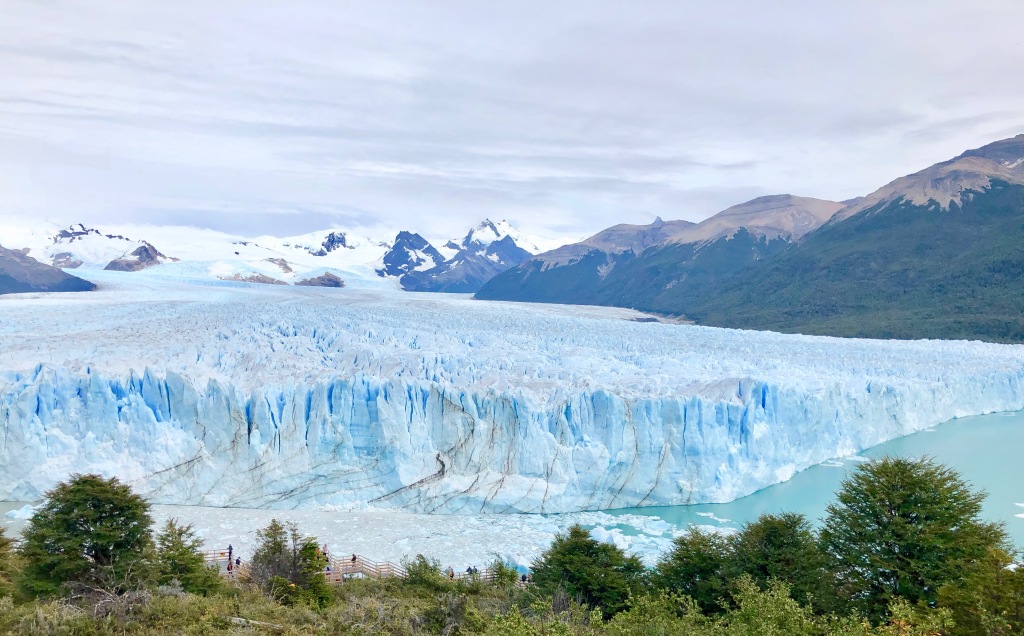

In Argentina one has to eat and drink like the Argentines. So that is what we did, We arrived at around 9.30 pm, Carolina and I had some good meat (see photo to the right) and we enjoyed a “Calafate sour”, a kind of pisco sour but with the Calafate fruit. When we left the restaurant at 11.30 pm, there were still people eating.


March 4 and 5
Both days were long travel days in northern direction through Patagonia Argentina. After a few hours driving we had a coffee break at Parador La Leona. The claim to fame of this old hotel in the middle of nowhere is that the American bank robbers Butch Cassidy and the Sundance Kid stayed here after they robbed a bank in Southern Argentina. Cool place especially for a retired banker.




It was a long drive north on Ruta 40 which included some fairly long stretches of dirt road (the longest piece was 75 kilometers). This part of the country is almost empty and it happened that for 15 minutes we did not see any other car. Patagonia is empty, dry with very few trees. The few towns we drove through are dusty and empty. It has to be said however, that the (few) people we met were very nice.



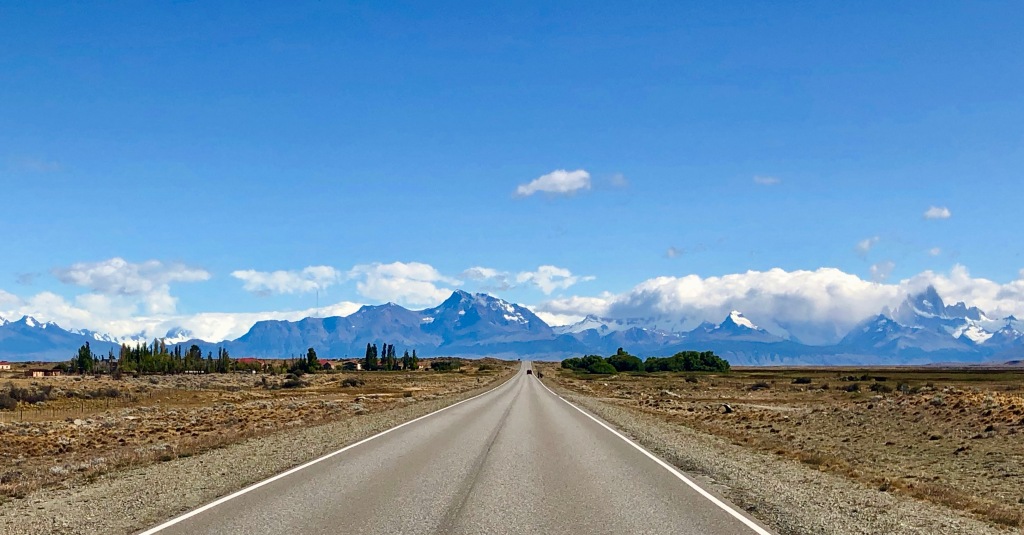


After two days of driving through Patagonia Argentina we reached the Chilean / Argentinean border which was placed in the Andes Mountains. Here we stayed in the small town of Chile Chico in a nice little apartment. Unfortunately the apartment only had one double bed so the old ladies had to stay in a bunk bed. They managed.
March 6
The apartment we rented was next to the dock from which we took a two hour ferry ride. It was all very well organized and by 8 am the crossing started
The building with the green circle around is where we stayed for the night.

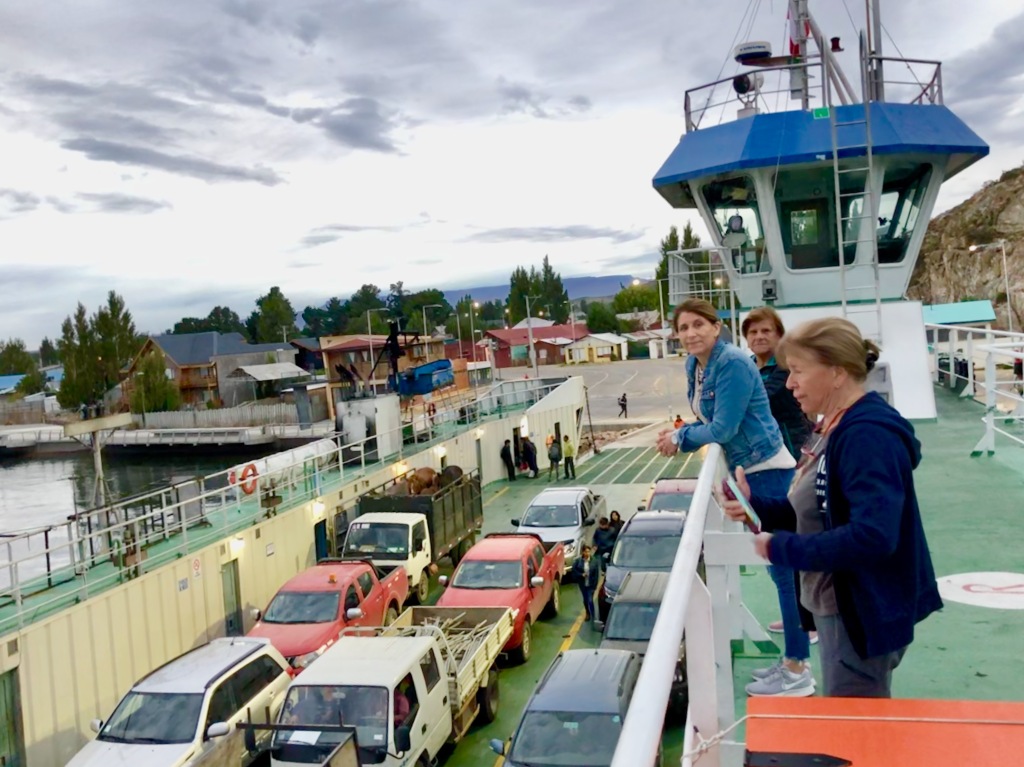



The landscape is completely different from what we saw the past two days. We are driving through green fields with lakes and snow capped mountains around valleys. There are also more people living in this part of the world although for our European standards it is still very empty. Some of the areas clearly reminds me of Austria. We only had a short drive to arrive in Coyhaique where we are staying at the local casino. On the pictures you will see that the weather is changing, as we are closer to the coast we are getting some showers.



March 7
Today we drove from Coyhaique to a lodge close to Chaiten. A beautiful drive through mountains and valleys. Everywhere you look there is water, lots of lakes, many rivers and waterfalls. It is really spectaculair.
The weather has changed. Today is a day with many showers and dark clouds, the sun hardly came out. The road was mostly fine although some parts of the Carretera Austral are still unpaved. There are hardly any towns and it is virtually impossible to buy a cup of coffee, Chileans in this part of the country are not very entrepreneurial.




A few more pictures because it is so beautiful here.
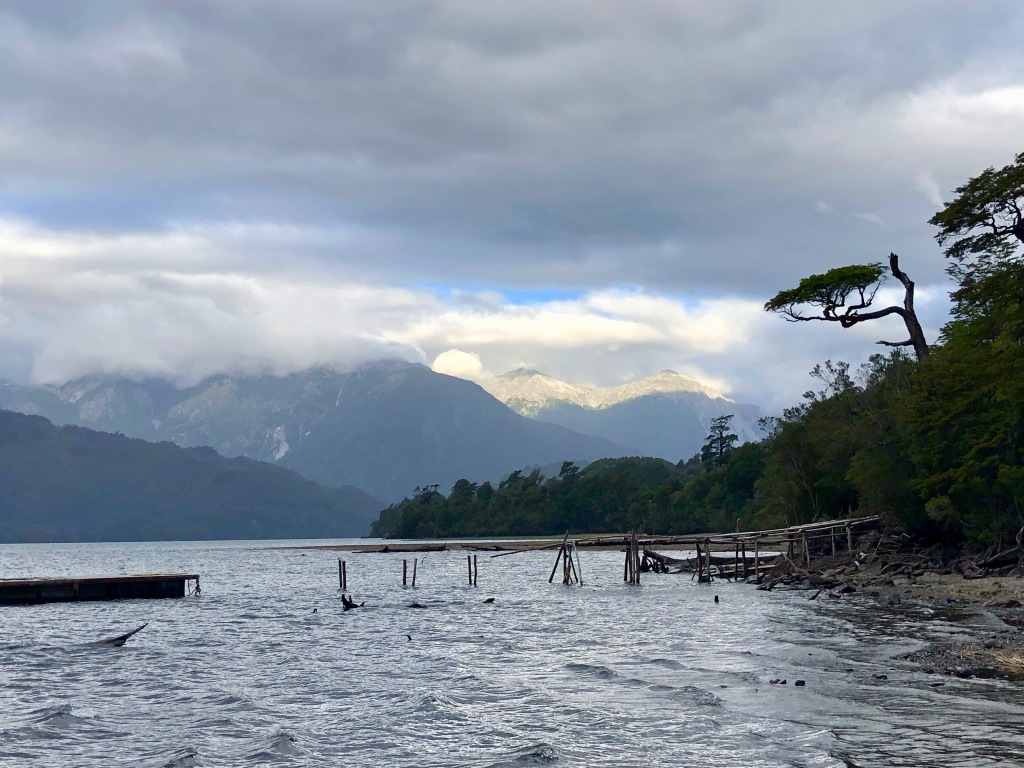

March 8
During breakfast I realized that this whole trip was going according to plan. We did not have any major delays, mess ups unexpected incidents or disasters. Except for the chaos at Santiago airport, everything worked as it should. Had Chile changed? Today was going to be our last long travel day so are we really going to make this trip without the usual chaos??
The day started perfect with a drive through the national park Pumalin. This park was set up by the American entrepreneur Douglas Tompkins who invested a fortune in temperate rainforest land in Chile and Argentina. Thompkins had made his money with North Face and Esprit clothing companies. The man died a few years ago and his heirs donated the land to the Chilean government which made it a national park. It is spectacular.
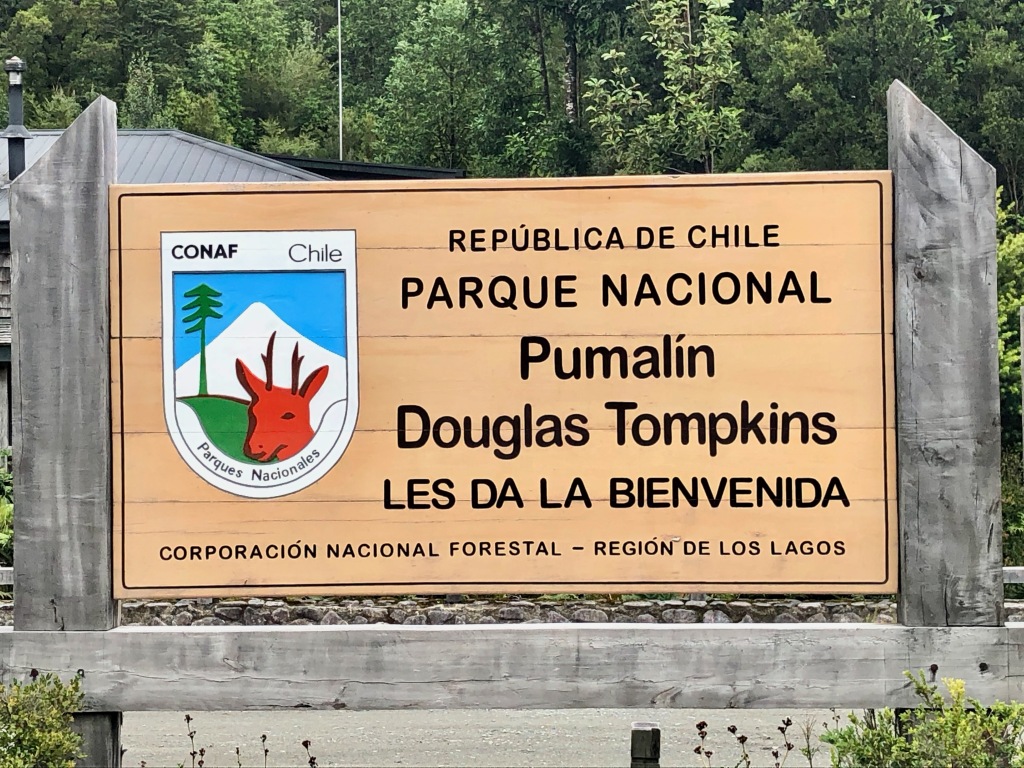
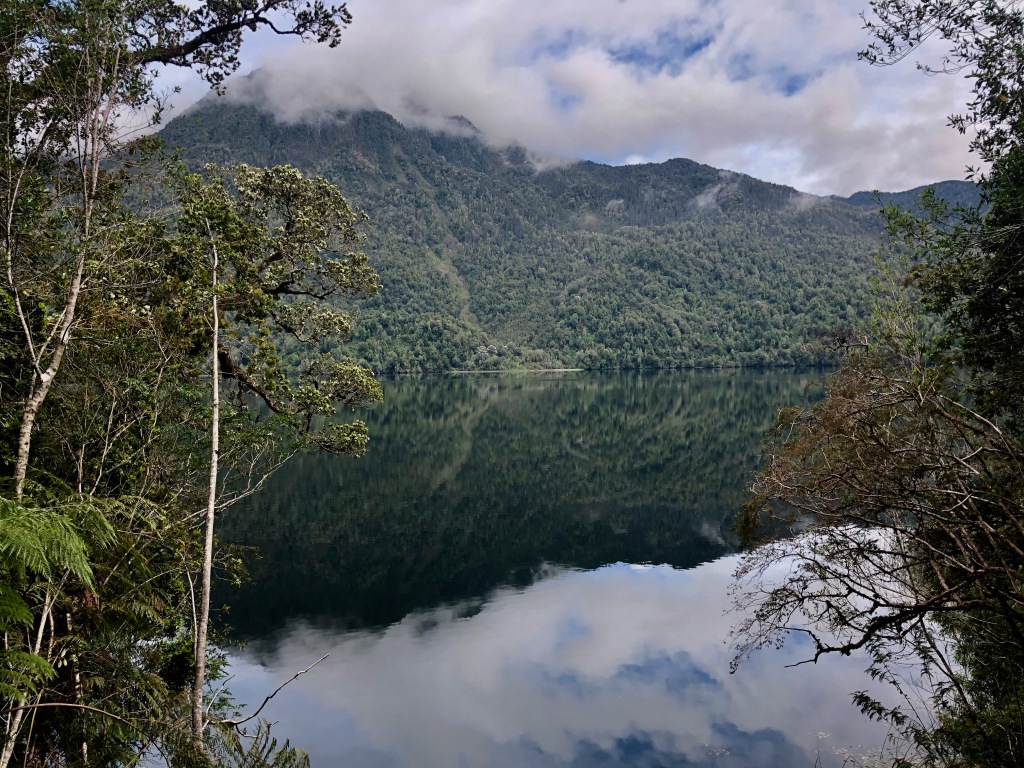


From Pumalin we were supposed to take a ferry at 1 pm. From this moment on everything that could go wrong, went wrong. The 1 pm ferry did not show up and nobody had any idea when a next boat would come. No communication at all and the ferry company did not answer any phone calls. Surprisingly a boat arrived at 6 pm, no excuses were made as apparently this is their normal way of doing business. Once on the boat, the captain decided to take a different route which added to the delay. These hours of delay had as a result that a next ferry we were supposed to take had already changed to “night itinerary” which resulted in 90 minutes more delay. Long story short, whereas we had expected to be at around 8 pm in the hotel, we arrived at 3 am. On a more positive note, I finished reading my book and was able to make a few more pictures. The old ladies just continued with what they had done the whole trip: they told stories about their lives…….many stories…..even at 3 am.
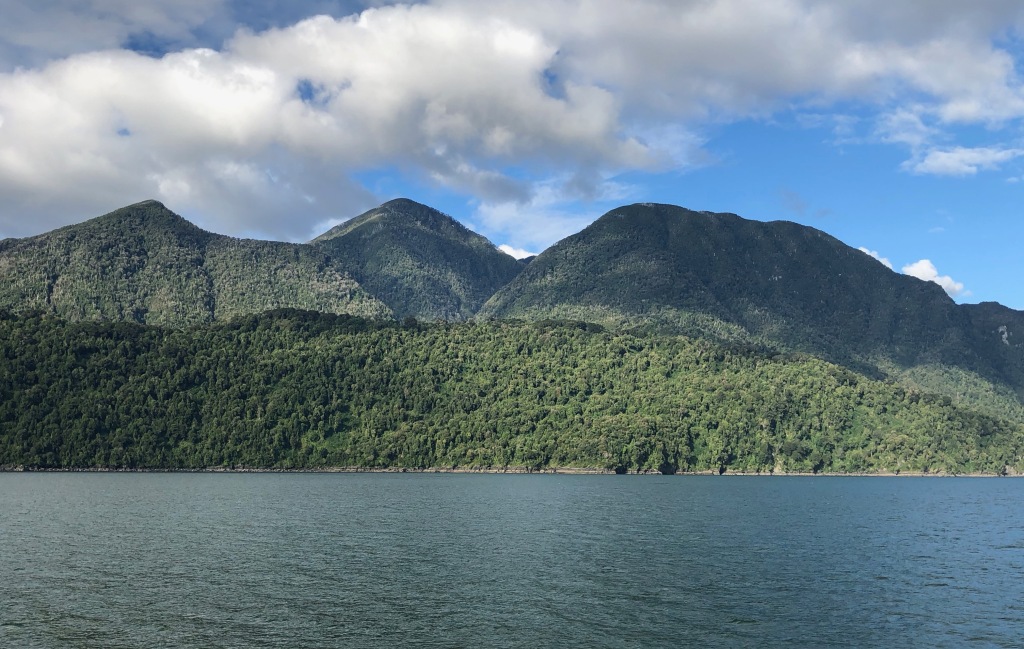



March 9
This is basically where our trip ends. We started the day in Puerto Montt, the city of the Chilean salmon industry. Today was a good example of what Chile is about. During breakfast we saw a demonstration of school kids. What the purpose of the demonstration was, remains a bit unclear but these kids are just not happy with the social situation in the country. For coffee we met an old friend of Carolina’s aunt. We drunk a raki (Turkish liquor) with him at 11 am in the morning but more importantly he gave me a good Cuban cigar. Chilean hospitality. In the afternoon we arrived back in Temuco which was still as polluted, chaotic and charming as when we left it. All that remains, is to take a flight back to Amsterdam.



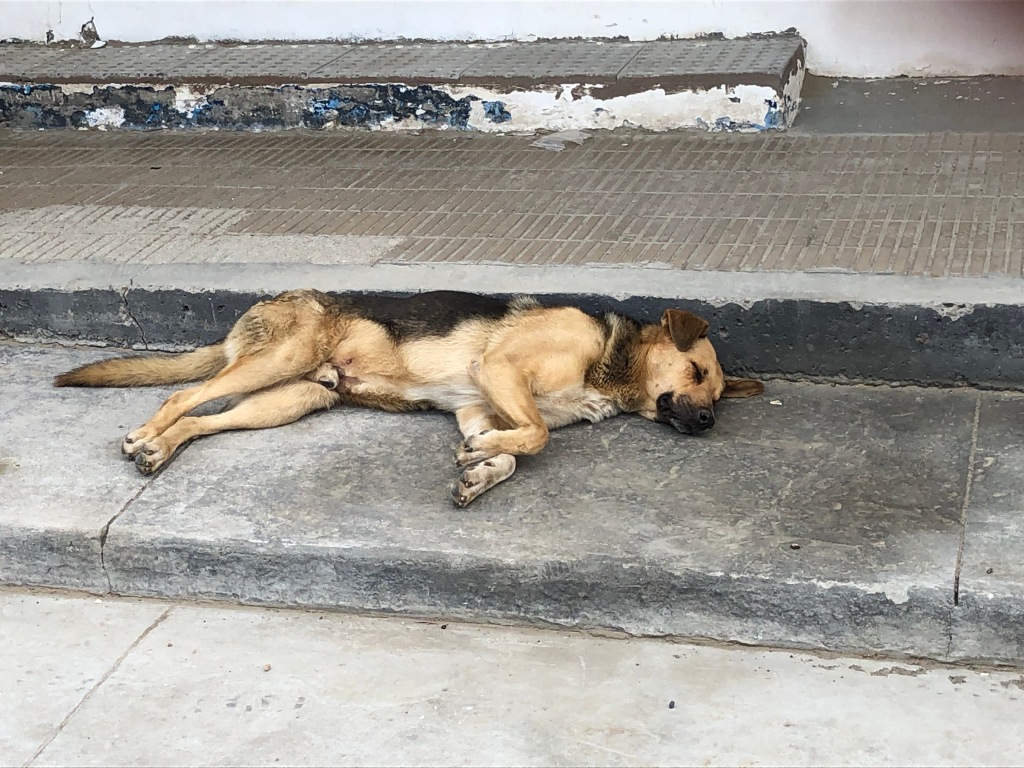
enjoy the trip!
LikeLiked by 1 person
Wonderful! Toni and i look forward to the day we can make a trip down there with you!
LikeLiked by 1 person
More pictures!!
LikeLiked by 1 person
Have a good trip through the Andes!
LikeLiked by 1 person
Wow!! What an adventure!
Such beautiful scenery!
Have fun and be safe!😘
LikeLiked by 1 person
Such magestic beauty!
Thank you for posting the photos. We are all living vicariously through them!
LikeLiked by 1 person
Beautiful we are jealous, look forward to more amazing foto’s!
LikeLike
spectcular trip.
LikeLike
spectecular trip!
LikeLike